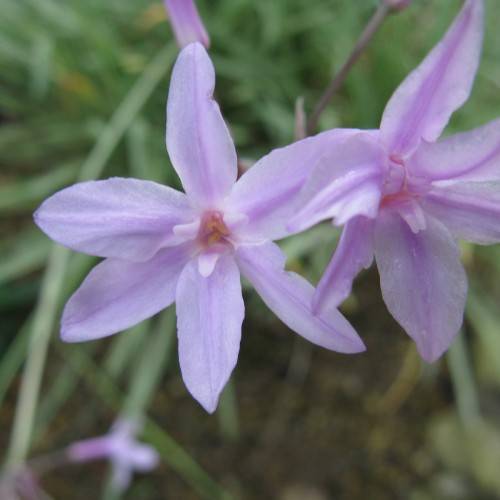
wild garlic
Tulbaghia violacea 'Silver Lace'
Cycle:
Herbaceous Perennial
Watering:
Average
Hardiness Zone:
7 - 10
Flowers:
Flowers
Sun:
Full sun
Leaf:
Yes
Growth Rate:
Low
Maintenance:
Low
Drought Tolerant:
Yes
Salt Tolerant:
Yes
Care Level:
Medium
watering
Water Wild Garlic (Tulbaghia violacea 'Silver Lace') liberally in spring and summer, with slightly less water in autumn and winter. Depending on the weather and time of year, water weekly or every other week to keep the soil moderately moist but not soggy. Allow the soil to dry out a bit between waterings and avoid overwatering. Consider using a drip irrigation system for best results.
sunlight
Wild garlic (Tulbaghia violacea 'Silver Lace') requires bright, indirect sunlight throughout the day. This plant species prefers at least 4-5 hours of moderate direct sunlight to grow and bloom optimally. Its best to place it in an area that receives sun during the morning and midday and is shaded during the hottest afternoon hours. During the summertime, if possible, avoid placing this plant in direct sunlight during the day as that can lead to wilting and foliage damage due to sunburn.
pruning
Wild garlic, or Tulbaghia violacea 'Silver Lace', should be pruned each growing season after flowering. For most parts of the world, this means in early spring or late summer. Pruning should focus on removing spent foliage and dead stems, as well as taking off branches with weak or dead stems. To maintain its shapely look, light pruning can be done to encourage new growth in desired areas. On the other hand, heavy pruning may be needed if the plant has become overgrown and is blocking pathways. This can be done by cutting down obtrusive branches up to a third of the plant's size.
